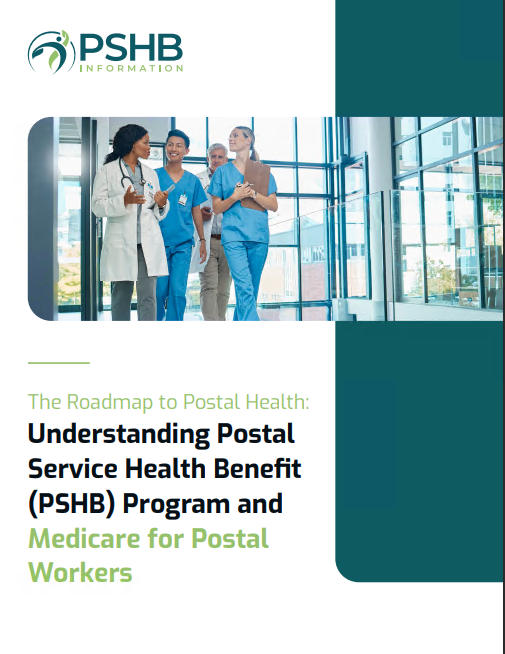Key Takeaways
-
The transition from FEHB to PSHB in 2025 affects all Postal Service employees and retirees, making it essential to understand the differences between these programs.
-
PSHB plans are designed specifically for postal workers, with Medicare integration playing a key role in cost savings for retirees.
What’s the Deal with PSHB and FEHB?
If you’re a USPS employee or retiree, you’ve probably heard about the switch from the Federal Employees Health Benefits (FEHB) program to the Postal Service Health Benefits (PSHB) program. Starting in 2025, this transition changes how you enroll, what your benefits look like, and, for some, how Medicare fits into the equation. So, let’s break it all down so you can confidently decide which health coverage works best for you.
The Basics: What Are FEHB and PSHB?
FEHB: The Longtime Federal Health Insurance Program
FEHB has been the go-to health insurance program for federal employees (including postal workers) for decades. It offers a range of plan options, with government contributions covering a portion of the premiums. Employees and retirees who remain in FEHB enjoy nationwide access to various health plans, and retirees can continue coverage without Medicare.
PSHB: A New Program Just for USPS Employees
With PSHB launching in 2025, postal employees and retirees must now enroll in a PSHB plan instead of FEHB. PSHB is tailored specifically to the needs of postal workers, and retirees who are eligible for Medicare Part B will need to enroll in it to maintain their PSHB coverage.
Key Differences Between PSHB and FEHB
Now, let’s talk about what actually changes when moving from FEHB to PSHB. Understanding these differences will help you prepare and avoid any surprises.
1. Who’s Eligible?
-
FEHB: All federal employees, including USPS workers, can enroll.
-
PSHB: Only active and retired USPS employees and their eligible family members can enroll. If you’re covered under a non-postal federal employee’s plan, you can stay in FEHB.
2. Medicare Requirements for Retirees
-
FEHB: Medicare enrollment is optional for retirees.
-
PSHB: If you’re a retired USPS employee (or an eligible family member) and Medicare-eligible, you must enroll in Medicare Part B to keep your PSHB coverage unless you qualify for an exception.
3. Plan Options and Coverage Differences
-
FEHB: Offers a variety of plans available to all federal employees.
-
PSHB: Plans are specifically designed for postal employees, potentially offering benefits that align better with USPS work conditions and retiree needs.
4. Costs and Premiums
While both FEHB and PSHB share similarities in cost structure, PSHB plans may have lower premiums due to the postal workforce’s unique risk pool. However, retirees must consider Medicare Part B premiums when calculating overall healthcare expenses.
How Medicare Fits Into PSHB
Medicare is a big piece of the PSHB puzzle for retirees. If you’re 65 or older and retired, you must enroll in Medicare Part B to maintain your PSHB coverage. But what does that actually mean?
Medicare Part B Enrollment: What You Need to Know
-
If you retired before January 1, 2025, Medicare Part B is optional for you.
-
If you retire in 2025 or later, Medicare Part B enrollment is mandatory for PSHB coverage.
-
Enrolling in Medicare Part B can reduce your out-of-pocket costs since many PSHB plans offer lower copays and deductibles for enrollees with Medicare.
What Happens If You Don’t Enroll in Medicare Part B?
If you don’t enroll in Medicare Part B when required, you will lose your PSHB coverage. Unlike FEHB, which allows retirees to remain covered without Medicare, PSHB links its coverage for retirees directly to Medicare enrollment.
Making the Switch: What You Need to Do
The transition from FEHB to PSHB doesn’t happen automatically. Here’s what you need to do to stay covered:
1. Review Your Current Coverage
Look at your current FEHB plan and see if a comparable PSHB plan is available. Pay attention to costs, benefits, and Medicare integration.
2. Enroll During Open Season
The 2025 Open Season runs from November 11 to December 13. This is your chance to choose your PSHB plan for the upcoming year.
3. Check Medicare Enrollment
If you’re retired or nearing retirement, make sure you’re enrolled in Medicare Part B if required. Missing the deadline can lead to penalties and coverage loss.
4. Watch for Official Notices
The Office of Personnel Management (OPM) and USPS will send out notifications about the transition. Stay on top of deadlines and requirements to avoid coverage gaps.
Choosing the Right Plan for You
Now comes the big question: which plan should you choose? Here are some factors to consider:
For Active Employees:
-
Compare PSHB plan benefits to your current FEHB plan.
-
Consider any out-of-pocket costs and whether they fit your budget.
For Retirees:
-
Factor in Medicare Part B premiums along with PSHB costs.
-
Look for plans that offer the best coordination with Medicare to minimize expenses.
-
If you retired before 2025 and don’t want Medicare, you might consider staying in FEHB if eligible.
The Bottom Line on PSHB vs. FEHB
The transition from FEHB to PSHB is one of the biggest changes to federal employee health benefits in years. The most important things to remember are:
-
Active postal employees will need to select a PSHB plan starting in 2025.
-
Retired postal workers must enroll in Medicare Part B to maintain PSHB coverage.
-
PSHB plans are designed for postal workers and may offer cost-saving advantages over FEHB.
-
You must take action during Open Season to ensure you have the coverage that best fits your needs.
If you have any doubts about which plan is right for you, talking to a licensed agent listed on this website can help you weigh your options and make an informed decision.







